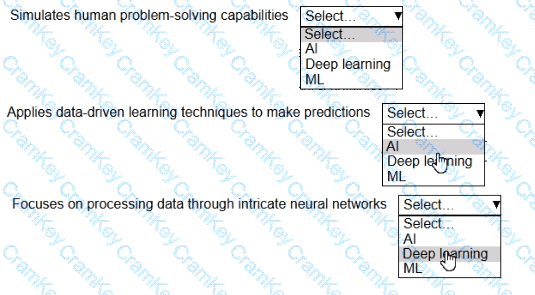| Exam Name: | AWS Certified AI Practitioner Exam | ||
| Exam Code: | AIF-C01 Dumps | ||
| Vendor: | Amazon Web Services | Certification: | AWS Certified AI Practitioner |
| Questions: | 289 Q&A's | Shared By: | lennie |
A company has developed a generative text summarization application by using Amazon Bedrock. The company will use Amazon Bedrock automatic model evaluation capabilities.
Which metric should the company use to evaluate the accuracy of the model?
A company is building a chatbot to improve user experience. The company is using a large language model (LLM) from Amazon Bedrock for intent detection. The company wants to use few-shot learning to improve intent detection accuracy.
Which additional data does the company need to meet these requirements?
HOTSPOT
Select the correct AI term from the following list for each statement. Each AI term should be selected one time. (Select THREE.)
• AI
• Deep learning
• ML
